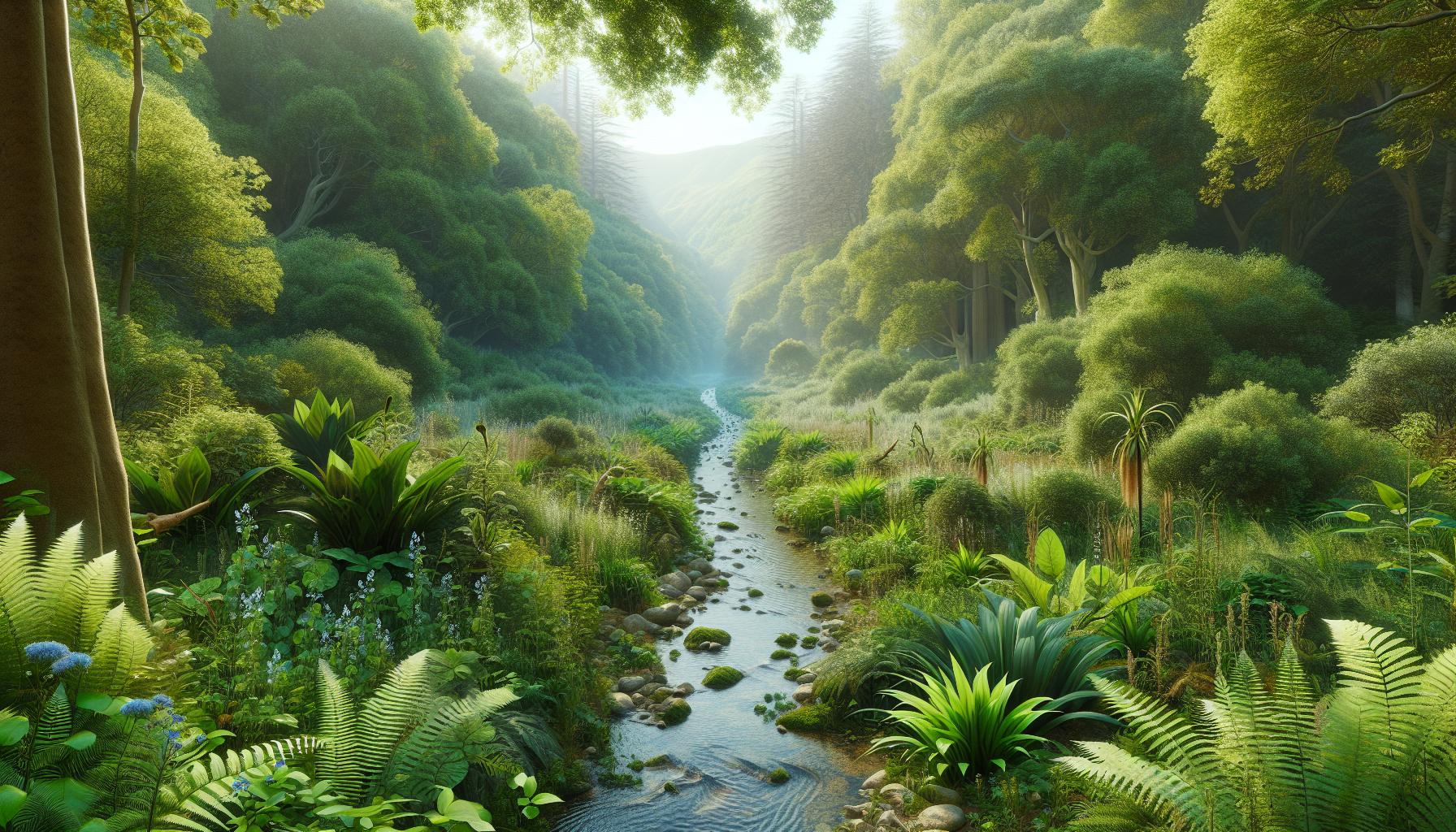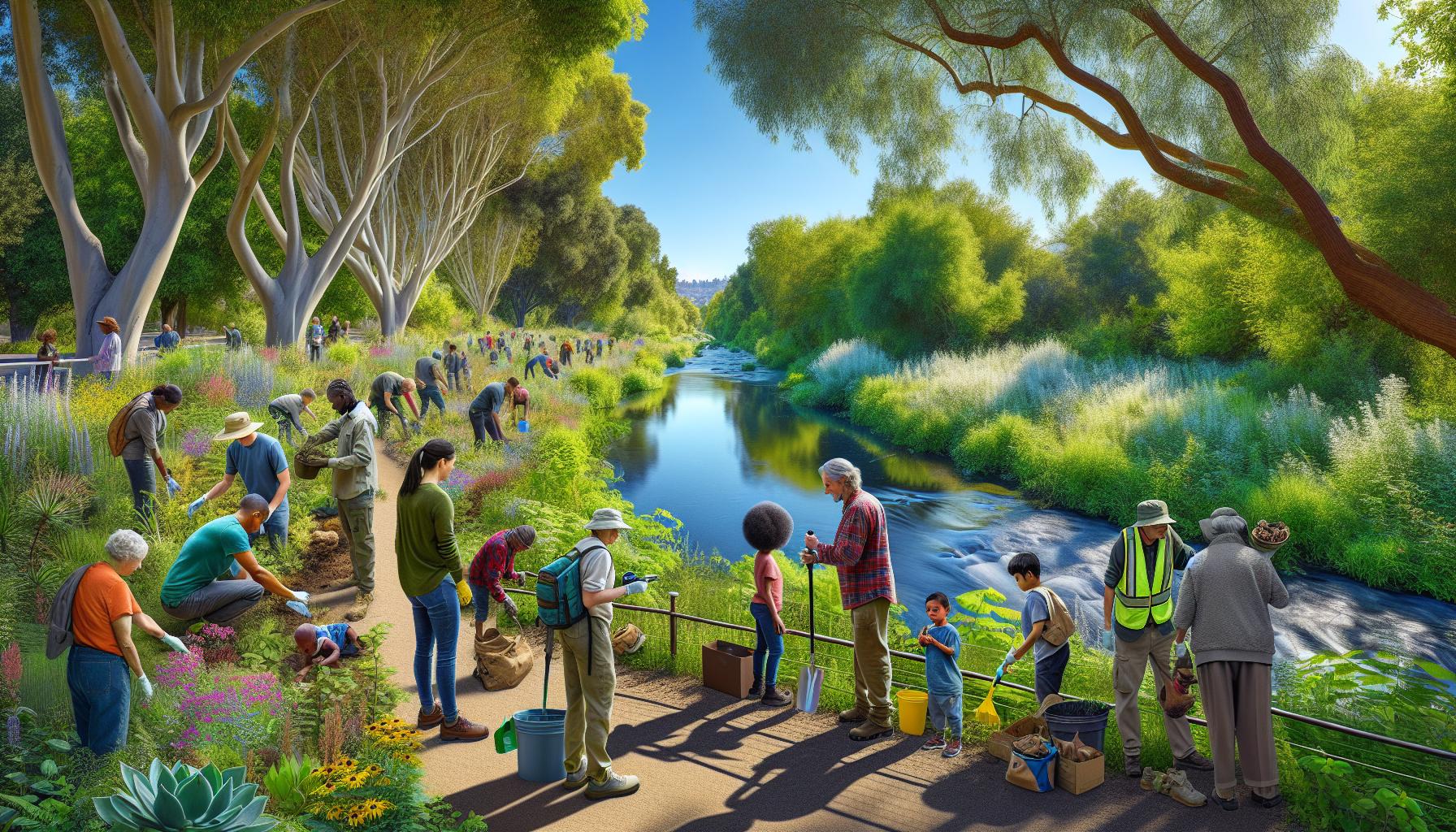I’ve always been fascinated by the way communities come together to protect and preserve their natural surroundings. Santa Rosa, a gem nestled in California, is no exception. With its rolling hills, vibrant green spaces, and diverse wildlife, it’s a place that truly captures the heart of environmental conservation. But what makes Santa Rosa stand out in its efforts to safeguard nature?
In recent years, the city has seen a surge in innovative conservation strategies, from community-led initiatives to government-backed projects. These efforts not only aim to preserve the beauty and biodiversity of the area but also to foster a sustainable relationship between humans and the environment. Join me as we explore the inspiring story of environmental conservation in Santa Rosa, where the community’s passion for nature is leading the way towards a greener, more sustainable future.
The Importance of Environmental Conservation in Santa Rosa
Santa Rosa’s commitment to environmental conservation isn’t just about maintaining the area’s natural beauty; it’s a vital strategy for ensuring a sustainable future for the community and the planet. I’ve learned that preserving the environment in this part of California goes beyond simple aesthetics. It involves a complex interplay of ecological balance, community health, and economic sustainability.
One of the primary reasons environmental conservation is so critical in Santa Rosa is the city’s unique biodiversity. The region is home to various ecosystems, including oak woodlands, riparian corridors, and grasslands, each supporting a myriad of plant and animal species. Protecting these habitats not only safeguards the species living within them but also preserves the ecological services they provide, such as air and water purification, soil fertility, and climate regulation. For instance, the preservation of local wetlands plays a crucial role in filtering pollutants from waterways, reducing the impact of flooding, and supporting fish populations, which are essential for the local food web and recreational fishing industry.
Another compelling reason for emphasizing environmental conservation in Santa Rosa involves climate change mitigation. As global warming presents increasingly severe challenges, maintaining and restoring natural landscapes becomes a powerful strategy for carbon sequestration. Trees, plants, and soil in undisturbed ecosystems absorb carbon dioxide from the atmosphere, acting as carbon sinks. By protecting these areas from development and degradation, Santa Rosa contributes to the global effort to combat climate change, aligning with California’s broader goals for reducing greenhouse gas emissions.
Furthermore, environmental conservation initiatives in Santa Rosa enhance the quality of life for its residents. Green spaces and preserved natural areas offer recreational opportunities, boost mental and physical health, and enhance the aesthetic appeal of the city. They also play a significant role in the local economy by attracting tourists and supporting businesses that depend on natural resources and outdoor activities. Additionally, conservation efforts help build a sense of community among residents who participate in volunteer activities aimed at preserving their local environment.
Finally, it’s essential to consider the educational value of environmental conservation in Santa Rosa. By promoting awareness and understanding of local ecosystems, conservation initiatives foster a sense of responsibility and stewardship among community members. Educational programs, whether in schools, nature centers, or community workshops, empower individuals with the knowledge and skills needed to protect the environment. This not only prepares future generations to face environmental challenges but also instills in them a profound appreciation for the natural world.
Historical Overview of Conservation Efforts in Santa Rosa

Santa Rosa’s journey into environmental conservation has a rich history that stretches back over decades, marking the city’s commitment to preserving its natural beauty and biodiversity. My research into this area has unveiled several key milestones that have shaped the region’s green landscape and its commitment to the environment.
Initially, conservation efforts in Santa Rosa were grassroots movements, led by local activists and community groups who recognized the inherent value of the region’s ecosystems. These early initiatives focused on protecting specific areas of natural beauty and ecological significance from the threats of urban development and pollution. One of the landmark achievements of this era was the establishment of the Santa Rosa Creek Greenway, a project that not only preserved a vital riparian habitat but also provided residents with a recreational space that connected them to nature.
As the understanding of environmental science grew, so did Santa Rosa’s conservation strategies. The city began to adopt more structured approaches, integrating environmental considerations into urban planning and development processes. Initiatives such as tree planting campaigns and the implementation of green building standards were aimed at reducing the environmental footprint of the city. These efforts reflected a shift towards a more sustainable model of urban living, balancing growth with ecological preservation.
In response to the growing concerns over climate change and its impacts, Santa Rosa’s conservation efforts took on a new dimension. The city started to focus on carbon sequestration strategies, recognizing the role of urban green spaces in capturing carbon dioxide and mitigating the effects of global warming. Projects such as expanding urban forests and restoring natural habitats became priorities, contributing to the city’s resilience against climate change.
Public engagement and education have been central to Santa Rosa’s conservation achievements. Through workshops, seminars, and community-based projects, the city has worked to foster a culture of environmental stewardship among its residents. These initiatives have empowered individuals to take part in conservation efforts, from adopting sustainable practices in their daily lives to participating in local environmental projects.
Moreover, partnerships with environmental organizations and government agencies have amplified Santa Rosa’s conservation impact. Collaborative efforts have led to the protection of additional natural areas, the restoration of wildlife habitats, and the implementation of comprehensive conservation plans that ensure the long-term sustainability of the city’s ecosystems.
Through these initiatives and more, Santa Rosa has demonstrated a consistent and evolving commitment to environmental conservation. Its journey reflects a community-wide ethos of respect for nature and a proactive approach to addressing environmental challenges, ensuring a greener, more sustainable future for generations to come.
Current Environmental Conservation Efforts

Building on Santa Rosa’s rich tradition of embracing nature, I’m excited to dive into the current environmental conservation efforts sweeping through the city. Given its history of prioritizing green space and sustainability, Santa Rosa continues to be a beacon of conservation practices that others can look to for inspiration.
One initiative that stands out is the expansion of the Santa Rosa Creek Greenway. Aimed at connecting people with the natural environment, this project not only preserves the creek’s natural beauty but also enhances accessibility for residents and visitors. The expanded greenway serves as a sanctuary for local wildlife and a recreational haven for the community, linking several city parks and providing educational opportunities on the local ecosystem.
In a push towards further reducing the city’s carbon footprint, Santa Rosa has implemented an urban tree plantation program. This effort focuses on planting native species that thrive in local conditions, thus requiring less water and maintenance. These trees not only sequester carbon but also provide much-needed shade, reducing urban heat island effects and making outdoor spaces more enjoyable.
Another remarkable effort comes in the form of habitat restoration projects. Santa Rosa actively collaborates with environmental groups to restore habitats disrupted by urbanization. By rehabilitating wetlands, stream corridors, and native plant communities, these projects aim to bolster biodiversity and support populations of native species. Such efforts not only enhance the city’s ecological health but also offer a blueprint for integrating habitat restoration within urban environments.
Santa Rosa’s environmental conservation narrative would be incomplete without mentioning its community engagement programs. The city hosts regular workshops and events aimed at educating residents about sustainable living practices, from water conservation to composting and renewable energy use. These programs empower individuals to contribute to conservation efforts in their daily lives, fostering a community-wide commitment to sustainability.
Furthermore, Santa Rosa is at the forefront of adopting green building standards. By requiring new constructions to meet rigorous environmental criteria, the city ensures that its growth remains sustainable. These standards cover energy efficiency, water conservation, and the use of sustainable materials, making Santa Rosa’s built environment a testament to its commitment to conservation.
As I explore these efforts, it’s clear that Santa Rosa’s dedication to environmental conservation is both broad and deep. From expanding greenways and planting trees to restoring habitats and engaging the community, the city is actively forging a sustainable future. It’s heartening to see how Santa Rosa not only cherishes its natural heritage but also innovates to protect it for generations to come.
Challenges Facing Environmental Conservation in Santa Rosa
Building on Santa Rosa’s impressive tradition of environmental conservation, I’ve come to understand that numerous challenges still lie ahead. These hurdles complicate efforts to preserve the city’s natural landscapes and biodiversity. As much as the city has accomplished, the path forward presents complex issues needing targeted solutions.
- Rapid Urbanization: Santa Rosa’s growth has surged, bringing with it the challenge of balancing developmental needs with environmental preservation. Urban sprawl threatens open spaces and necessitates a more strategic approach to land use to prevent habitat loss and ensure the integrity of ecosystems around neighborhoods and the downtown area.
- Climate Change: Increased temperatures and changing precipitation patterns pose significant risks to Santa Rosa’s natural habitats. Wildfires have become a more pressing concern, with the devastating Tubbs Fire in 2017 highlighting the vulnerability of the area. Adapting conservation strategies to address these evolving conditions is crucial for the city’s long-term sustainability.
- Water Resource Management: Managing water resources amid fluctuating supply levels due to droughts and increased demand is another significant challenge. Ensuring adequate water for human consumption, agriculture, and natural ecosystems calls for innovative conservation measures and the implementation of efficient water use practices.
- Invasive Species: The introduction and spread of invasive plant and animal species threaten native biodiversity in Santa Rosa. Efforts to control invasive species require ongoing funding, research, and community involvement to protect local flora and fauna.
- Funding and Resource Allocation: Securing consistent funding for conservation initiatives remains a challenge. While community support is strong, competing demands for city resources can limit the scope and effectiveness of environmental projects. Innovative financing solutions and partnerships are essential to sustain and expand conservation efforts.
Despite these challenges, Santa Rosa’s commitment to environmental stewardship remains unwavering. Addressing the issues outlined above requires collaboration between local government, businesses, environmental organizations, and the community. By facing these challenges head-on, Santa Rosa can continue to thrive as a model of sustainable living and conservation. The journey ahead is complex, but with the city’s history of environmental innovation, I’m optimistic about our ability to maintain and enhance the natural beauty and ecological health of this vibrant community.
Future Directions for Conservation in Santa Rosa
Reflecting on Santa Rosa’s rich history and current challenges in environmental conservation, I’m excited to share insights into the promising directions for future initiatives. Santa Rosa’s dedication to preserving its natural beauty and biodiversity, amidst the hurdles of rapid urbanization and climate change, sets a stage for innovative conservation strategies.
One key focus area involves enhancing the resilience of local ecosystems against the impacts of climate change. With wildfires becoming a more frequent concern, Santa Rosa plans to increase its efforts in forest management, including controlled burns and the removal of dead trees, to reduce fire risks. Additionally, the city aims to expand its urban tree planting programs, targeting not just public spaces but also encouraging residents to plant more trees in their yards. These endeavors not only improve air quality but also contribute to the urban canopy, lowering city temperatures during hot summers.
Water resource management remains a critical component of Santa Rosa’s conservation efforts. The city is set to invest in advanced water recycling and rainwater harvesting projects to ensure sustainable water supply. These projects not only address the immediate needs of the community but also mitigate the long-term effects of droughts, securing water for the city’s growth and environmental needs.
Invasive species pose a significant threat to the native biodiversity of Santa Rosa. Future conservation plans include strengthening partnerships with local organizations and volunteers to monitor and control invasive species populations. Through community-led clean-up and education campaigns, Santa Rosa aims to engage citizens in protecting and restoring natural habitats.
To tackle the challenge of funding constraints, Santa Rosa is exploring innovative financing models. Grants, public-private partnerships, and crowdfunding campaigns are among the strategies the city plans to employ to support its conservation projects. By diversifying funding sources, Santa Rosa ensures that environmental initiatives remain a priority, regardless of economic fluctuations.
Engagement with local businesses and the wider community forms the backbone of Santa Rosa’s approach to sustainable development. Future initiatives will emphasize sustainable agriculture and green businesses, promoting practices that reduce environmental footprints while supporting the city’s economy. Workshops, seminars, and incentives for sustainable practices are on the agenda, aimed at fostering a community-wide ethos of conservation.
Santa Rosa’s future conservation efforts build on a foundation of community involvement, advanced technology, and strategic planning. By addressing the root causes of environmental challenges and leveraging collaborative solutions, Santa Rosa sets an example of sustainable living and preservation for generations to come.
Conclusion
Santa Rosa’s journey in environmental conservation is both inspiring and a call to action. The city’s efforts, from the Santa Rosa Creek Greenway to innovative green building standards, show a deep commitment to preserving the environment. Despite the hurdles like wildfires and urbanization, the resolve to enhance ecosystem resilience and engage the community in sustainable practices shines through. I’m particularly excited about the future directions aimed at combating climate change and promoting biodiversity. It’s clear that with strategic planning and community involvement, Santa Rosa is paving the way for a greener, more sustainable future. Let’s keep an eye on this beautiful city as it continues to lead by example in environmental stewardship.
Ben Rutstein is the publisher of this website, he started traveling to northern California in 2014, and the Santa Rosa is one of his favorite places to visit, from that time onwards he has explored everything from visiting cafes to yoga in parks, local hikes.
He is known to drop everything at a moments notice for a visit to a winery or a visit to a park.
